Japan, a captivating archipelago where ancient traditions seamlessly blend with futuristic innovation, has long been a dream destination for many. If you’re planning your inaugural journey to this fascinating country and have two weeks to explore, you’re in for an unforgettable adventure. This meticulously crafted 2 week Japan travel itinerary is designed to ensure you experience the very best of Japan, even on your first visit.
Having been utterly enchanted by Japan since childhood, my first trip over a decade ago exceeded all expectations, sparking a lasting love affair with this incredible nation. Planning that initial trip, however, felt overwhelming. The desire to maximize every moment was intense, unsure when I’d have the opportunity to return.
Sound familiar? Rest assured, you’re not alone. This 2 week Japan travel itinerary is specifically tailored for first-time visitors, aiming to alleviate planning stress and help you make the most of your precious time in Japan.
Let’s embark on this exciting journey together!
Your 2 Week Japan Itinerary: Destinations & Route Overview
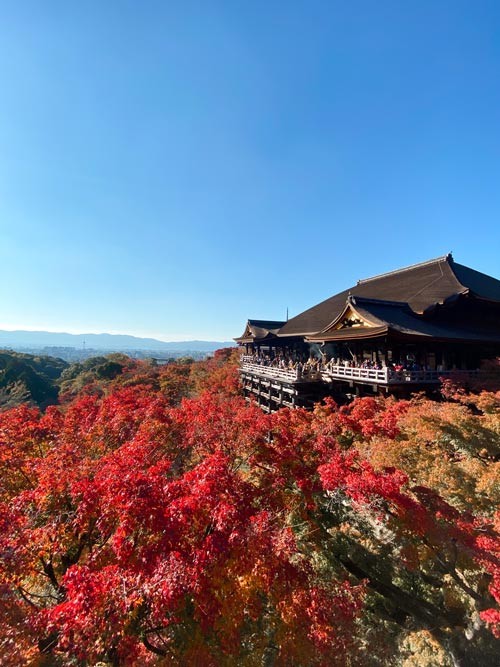 Kiyomizu-dera Temple in Kyoto during autumn, showcasing vibrant foliage
Kiyomizu-dera Temple in Kyoto during autumn, showcasing vibrant foliage
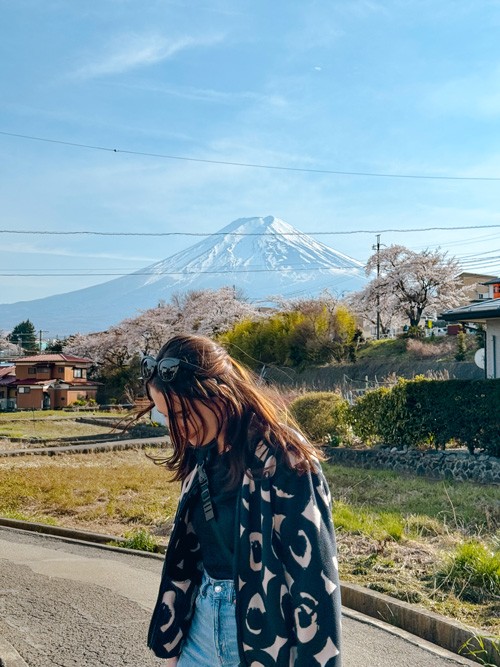 Majestic Mount Fuji under a clear sky
Majestic Mount Fuji under a clear sky
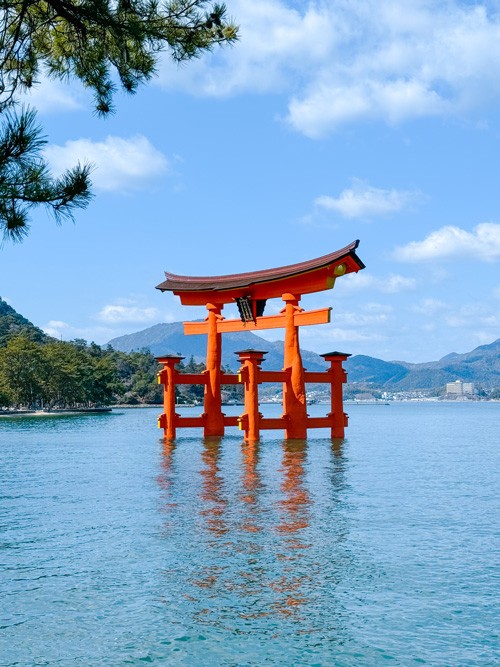 Iconic giant torii gate of Itsukushima Shrine in Miyajima, seemingly floating on water
Iconic giant torii gate of Itsukushima Shrine in Miyajima, seemingly floating on water
Two weeks provides the ideal timeframe for a comprehensive introduction to Japan. This itinerary is inspired by the classic Golden Route, enhanced with personal recommendations to elevate your experience. Prepare to explore iconic cities and breathtaking landscapes, including: Tokyo (3 days), the majestic Mount Fuji region (1 day), a choice of cultural day trips – Hakone, Nikko, or Kamakura (2 days), Kyoto, the heart of traditional Japan (3 days), vibrant Osaka (1 day), serene Nara (1 day), historic Himeji (1 day), and poignant Hiroshima and Miyajima (2 days).
While this itinerary encompasses numerous destinations, it’s designed for efficiency. You won’t be burdened with daily hotel changes. We’ll strategically base you in key cities, utilizing Japan’s exceptional public transportation for seamless day trips. This approach minimizes luggage hassles and maximizes your exploration time. You’ll only need to relocate your accommodation a few times throughout your two-week journey.
This 2 week Japan travel itinerary offers a balanced pace, allowing you to immerse yourself in the culture and sights without feeling rushed. For visual guidance, the map below pinpoints all itinerary highlights. By downloading Google Maps, you can access this interactive map offline during your travels, ensuring you don’t miss any recommended spots.
Beyond the major attractions, this interactive Google Maps includes curated recommendations for coffee shops, restaurants, and unique stores to enhance your authentic Japanese experience.
Explore the Interactive Google Map for Your 2 Week Japan Itinerary
Strategic Accommodation: Where to Stay During Your 2 Week Japan Trip
To optimize your 2 week Japan travel itinerary and minimize travel fatigue, we recommend establishing a few “home bases” and venturing out on day trips. Japan’s efficient and user-friendly public transport system makes this approach incredibly convenient.
Furthermore, this itinerary prioritizes locations with excellent connectivity. We will highlight cost-saving discount passes for public transport, simplifying your day trip navigation.
For a smooth and enjoyable 2 week Japan travel experience, consider these accommodation recommendations:
| Duration | City | Recommended Hotel Area & Links to Guides |
|---|---|---|
| Days 1–6 | Tokyo | Tokyo Accommodation Guide – Explore detailed area recommendations for your Tokyo stay. |
| Days 7–11 | Kyoto | Kyoto Accommodation Guide – Find the perfect neighborhood in Kyoto to match your preferences. |
| Days 12–14 | Hiroshima | Hiroshima Accommodation Guide (Coming Soon) – Stay tuned for our upcoming guide to the best places to stay in Hiroshima. |
Enhance Your Japan Trip Planning: Further Resources
For more inspiration and detailed guides to complement your 2 week Japan travel itinerary, explore these helpful resources:
Pocket WiFi for Japan Travel – Stay connected with reliable internet access throughout your trip (Use code THENAVIGATIO15 for 15% off).
Detailed 2 Week Japan Itinerary: Day-by-Day Breakdown
Here’s a comprehensive day-by-day breakdown of your 2 week Japan travel itinerary. Feel free to follow it directly or customize it to align with your personal travel style and interests.
Days 1-3: Tokyo – Immersing Yourself in the Metropolis
Our 2 week Japan travel itinerary commences in Tokyo, Japan’s dynamic capital. Most international flights arrive at either Haneda or Narita Airport, making Tokyo an ideal starting point for your Japanese adventure. Navigating from either airport is straightforward via public transport, airport transfers, or taxis. While initially daunting, public transport is highly recommended for its cost-effectiveness and ease of use.
Upon arrival, acquiring a Suica or Pasmo card is highly advisable. These rechargeable travel cards, also available digitally on iPhones, are indispensable for seamless travel on public transport throughout Japan and are considered one of the best Japan travel apps.
Given the first six days are dedicated to exploring Tokyo and its surroundings, booking your Tokyo accommodation for the initial six nights is recommended. Staying in one hotel simplifies logistics, allowing you to use a backpack for day trips and avoid constant suitcase relocation.
Choosing where to stay in sprawling Tokyo can be overwhelming for first-timers. Areas like Minato, Asakusa, and Roppongi are excellent choices for their accessibility and attractions. Our detailed guide on where to stay in Tokyo provides a comprehensive breakdown of neighborhoods tailored to different travel styles. However, for first-time visitors, here are top recommendations:
| Area | Best Suited For | Recommended Hotel | Check Availability |
|---|---|---|---|
| Minato | First-Time Visitors | Park Hotel Tokyo | Check Availability |
| Asakusa | Budget-Conscious Travelers | Hotel Sunroute Asakusa | Check Availability |
| Roppongi | Luxury Seekers | The Prince Park Tower Tokyo | Check Availability |
Day 1: Tokyo – Shrines, Fashion, and City Views
Tokyo’s vastness could easily occupy a month of exploration. However, for this 2 week Japan travel itinerary, we’ve curated three days to showcase Tokyo’s essential highlights, providing a captivating introduction to this dynamic metropolis.
Day 1 offers a taste of Tokyo’s diverse appeals:
- Meiji Shrine Exploration: Begin at Meiji Shrine, a serene oasis nestled within one of Tokyo’s largest parks. Enter through a towering wooden torii gate near Harajuku Station and wander through a tranquil forest of over 100,000 trees leading to the shrine. Don’t miss the impressive wall adorned with over 200 sake barrels, a testament to tradition.
- Harajuku Shopping and Style: Immerse yourself in Harajuku’s vibrant street style. Explore Takeshita Street, renowned for its trendy boutiques and unique fashion. Continue to Omotesando, a more upscale avenue, and witness the iconic Harajuku fashion scene firsthand.
- Purikura Fun: Experience Purikura, Japan’s playful photo booths, a fun departure from standard photo booths. Capture kawaii-style photos with customizable filters, stickers, and text to create unique Japanese keepsakes.
- Shibuya Crossing Spectacle: A short metro ride or 15-minute walk from Harajuku brings you to Shibuya Crossing, the world’s busiest intersection. Observe the organized chaos from elevated viewpoints like L’Occitane Cafe, Cé La Vi, or the revamped Starbucks for a memorable perspective.
- Hachiko Statue Tribute: Just outside Shibuya Station, find the poignant Hachiko Statue. This statue commemorates the loyal Akita dog Hachiko, who waited patiently for his owner at the station for years after his passing.
- Shibuya Sky Panoramic Views: Ascend to Shibuya Sky for breathtaking 360-degree panoramic views of Tokyo. This popular open-air observation deck is best experienced around sunset (pre-book tickets to secure your entry) for stunning cityscapes, possibly including Mount Fuji on a clear day.
- Shibuya Center Gai Culinary Delights: Conclude your day exploring Shibuya Center Gai, a narrow, bustling street known for its diverse dining and nightlife options. Enjoy dinner and drinks at one of the many izakayas, immersing yourself in Tokyo’s vibrant evening atmosphere.
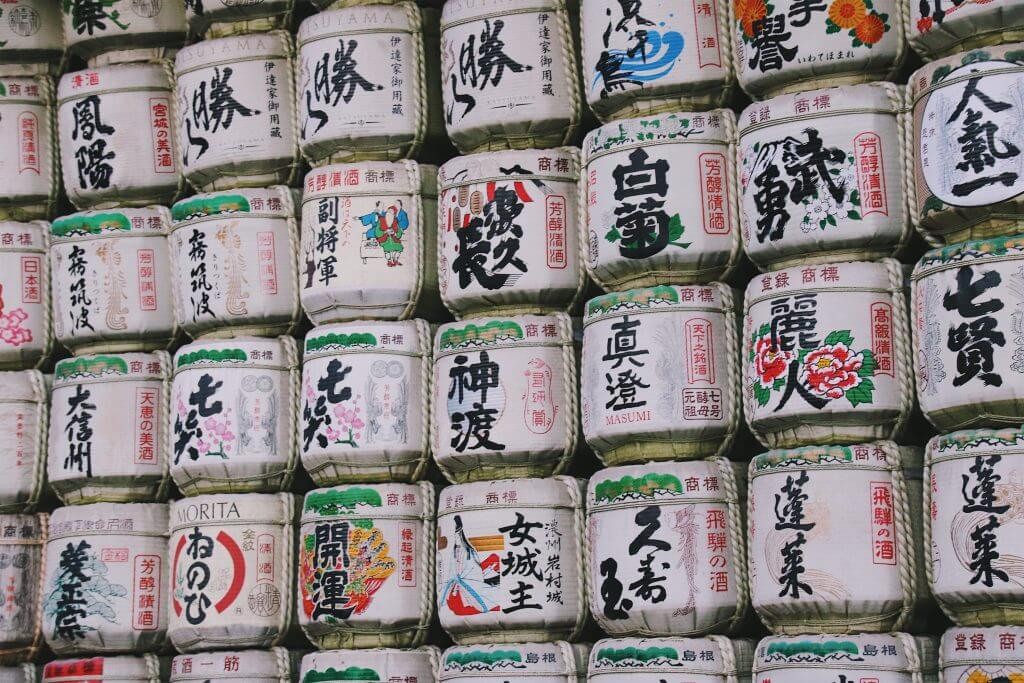 Meiji Shrine in Tokyo, showcasing traditional architecture and peaceful surroundings
Meiji Shrine in Tokyo, showcasing traditional architecture and peaceful surroundings
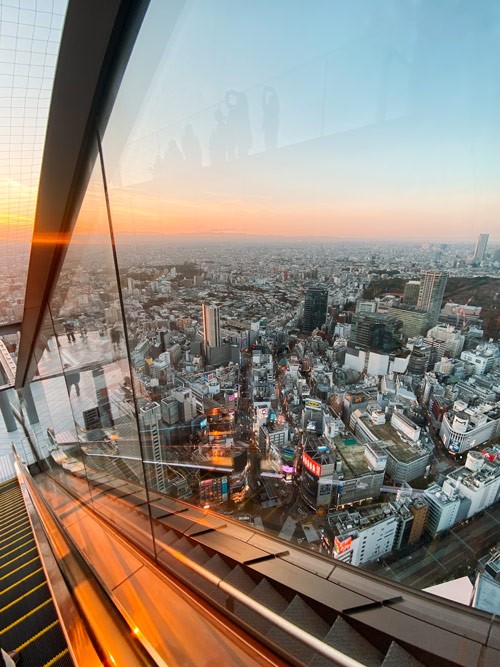 Shibuya Sky at sunset, capturing the vibrant Tokyo skyline
Shibuya Sky at sunset, capturing the vibrant Tokyo skyline
Day 2: Tokyo – Temples, Markets, and Electric Town
Day 2 of your 2 week Japan travel itinerary offers a contrasting exploration of Tokyo, venturing from the traditional charm of Asakusa to the electric energy of Akihabara.
- Senso-ji Temple & Nakamise Street: Begin your day at Senso-ji Temple in Asakusa, Tokyo’s oldest temple, dating back to 645 AD. Explore the beautiful temple grounds, admiring the architecture and gardens. Try o-mikuji, Japanese fortune telling, for a fun cultural experience. Just outside the temple, Nakamise Street awaits, a vibrant 200-meter street lined with vendors selling souvenirs and traditional snacks.
- Ueno Park Exploration: Head to Ueno Park, renowned for its cherry blossoms (peak season in late March/early April). Even outside cherry blossom season, Ueno Park offers excellent museums and Pokemon-themed manhole covers to discover.
- Kappabashi Kitchenware District: En route from Asakusa to Ueno, explore Kappabashi, a specialized street brimming with shops selling kitchenware, from exquisite Japanese knives to tableware and culinary tools.
- Ueno Ameyoko Market Immersion: Experience the lively atmosphere of Ueno Ameyoko Market, an open-air market perfect for browsing, shopping, and enjoying a quick and authentic lunch amidst the bustling energy.
- Akihabara “Electric Town” Adventure: Immerse yourself in Akihabara, also known as “Electric Town,” a haven for anime, manga, and video game enthusiasts. Explore retro video game stores, anime figure shops, and arcades. Don’t miss the multi-story arcades for classic Japanese gaming experiences beyond the typical crane games.
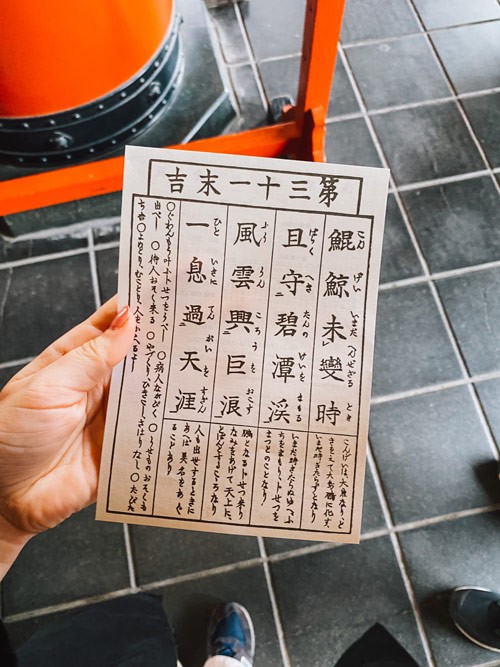 Senso-ji Temple's iconic architecture in Asakusa, Tokyo
Senso-ji Temple's iconic architecture in Asakusa, Tokyo
 Senso-ji Temple's iconic architecture in Asakusa, Tokyo
Senso-ji Temple's iconic architecture in Asakusa, Tokyo
 Senso-ji Temple's iconic architecture in Asakusa, Tokyo
Senso-ji Temple's iconic architecture in Asakusa, Tokyo
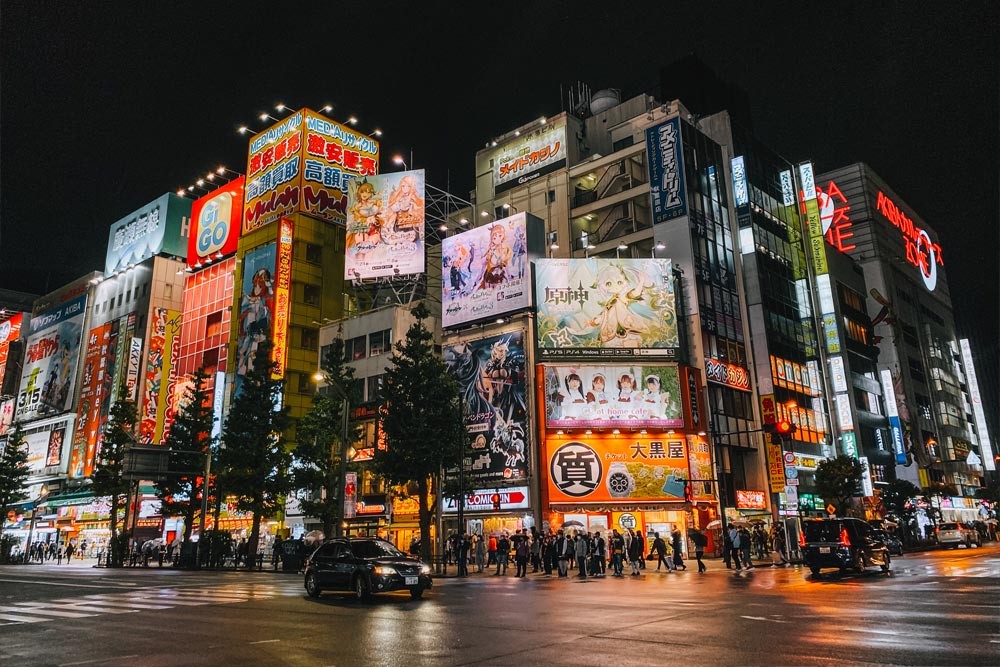 Akihabara at night, illuminated with neon lights and vibrant signs
Akihabara at night, illuminated with neon lights and vibrant signs
Day 3: Tokyo – Imperial Grandeur and Artistic Roppongi
Your final day in Tokyo on this 2 week Japan travel itinerary delves into imperial history and artistic explorations.
- Tokyo Imperial Palace Visit: Explore the Tokyo Imperial Palace, the primary residence of the Emperor of Japan, situated on the former site of Edo Castle. A guided tour is recommended for access to restricted areas and deeper historical insights.
- Zōjō-ji Temple and Tokyo Tower Views: En route to Tokyo Tower, stop by Zōjō-ji Temple, a beautiful temple complex offering excellent views of the iconic Tokyo Tower.
- Tokyo Tower Photo Opportunity: Capture photos of Tokyo Tower, a symbol of the city. While ascending to the top isn’t essential (Roppongi offers arguably superior skyline views including Tokyo Tower), the tower itself is a must-see landmark.
- Roppongi Art Triangle Immersion: Explore Roppongi, a district renowned for its art museums and galleries. Discover the Roppongi Art Triangle, encompassing the Mori Art Museum, the National Art Gallery, and the Suntory Museum of Art. The Mori Art Museum combines art with stunning city views, including Tokyo Tower. For modern Japanese design, consider 21 21 Design Sight.
- Karaoke Night in Roppongi: Experience Japanese karaoke in Roppongi. Unlike Western karaoke, private booths are rented, allowing for a more intimate and personalized singing experience, complete with in-booth drink service.
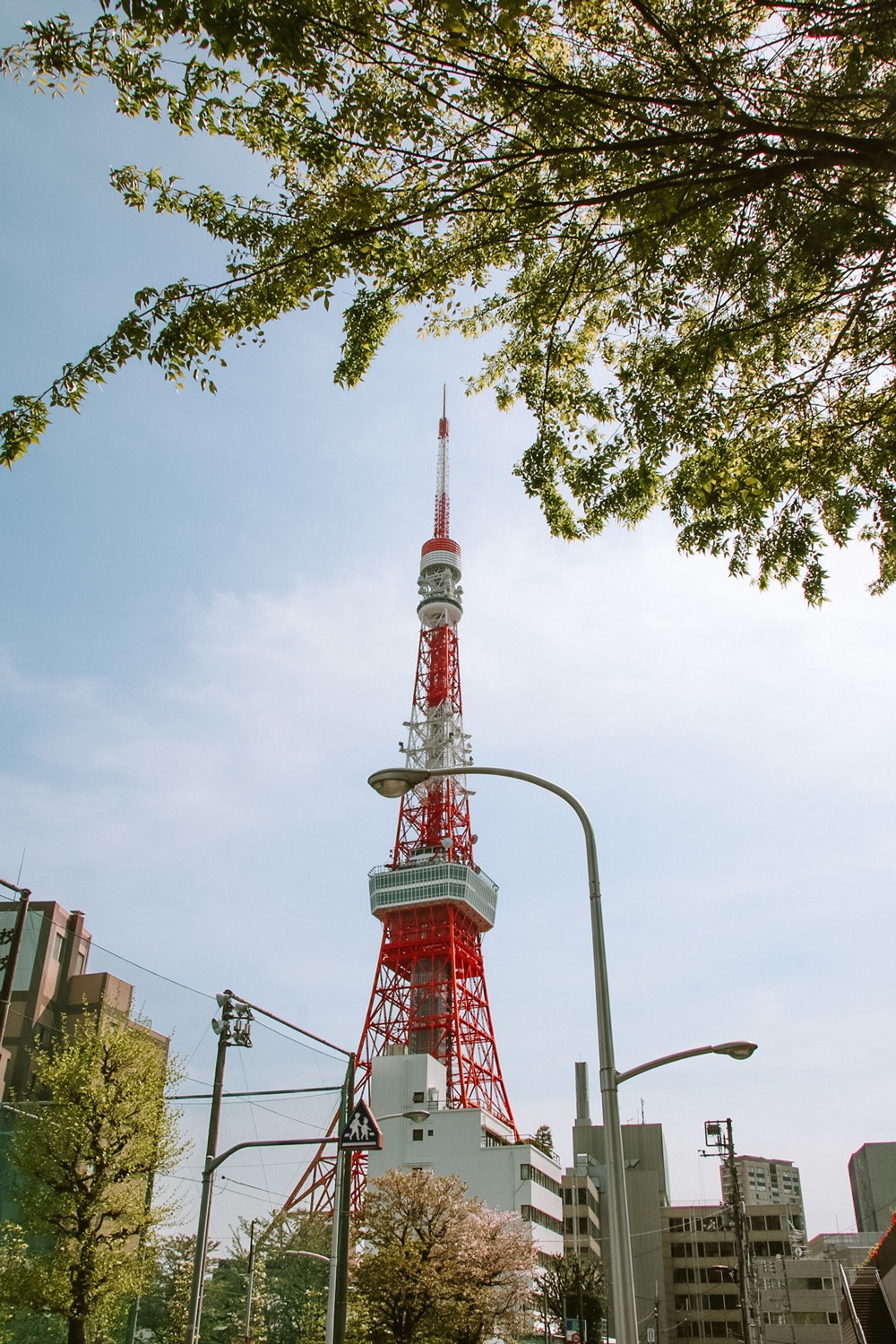 Tokyo Tower, a classic symbol of the city's skyline
Tokyo Tower, a classic symbol of the city's skyline
Day 4: Mount Fuji – Majestic Views and Natural Beauty
No 2 week Japan travel itinerary is complete without experiencing the iconic Mount Fuji. A day trip to the Mount Fuji region offers breathtaking views of this sacred volcano. While climbing Mount Fuji is possible during hiking season (July-September, requiring significant time and effort), a day trip focuses on enjoying the surrounding landscapes.
Lake Kawaguchiko is the most accessible and scenic base for exploring Mount Fuji. Reach Lake Kawaguchiko by bus or train from Tokyo. Rent a bicycle to explore the lake’s perimeter, offering various vantage points of Mount Fuji. Alternatively, visit the Chureito Pagoda for the classic postcard-perfect view of Mount Fuji.
Consider booking a guided Mount Fuji day tour from Tokyo for a hassle-free experience, ensuring you see key viewpoints. While DIY is possible, tours optimize time and access to highlights.
Mount Fuji visibility can be unpredictable due to cloud cover. Monitor weather forecasts while in Japan and consider adjusting your Tokyo days to maximize your chances of clear views. This website offers detailed Mount Fuji visibility forecasts.
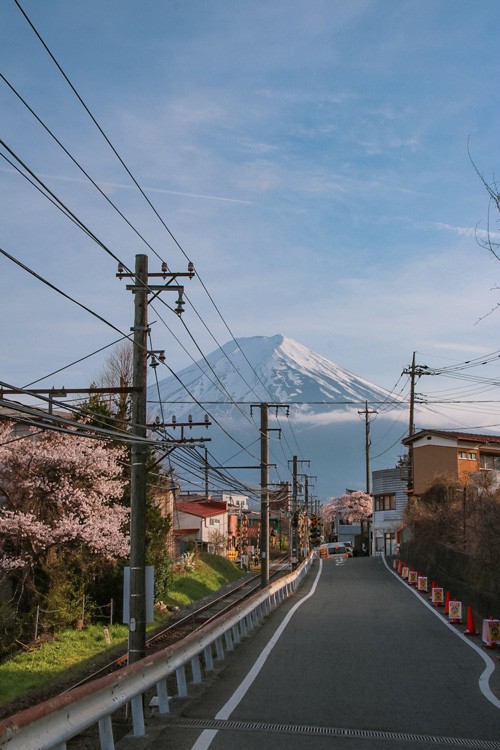 Mount Fuji, serene and snow-capped, reflected in a lake
Mount Fuji, serene and snow-capped, reflected in a lake
Days 5-6: Day Trip Choices – Hakone, Nikko, or Kamakura
Days 5 and 6 of your 2 week Japan travel itinerary offer flexibility. Choose two day trips from Tokyo based on your interests: Hakone, Nikko, or Kamakura, each offering distinct experiences.
Hakone Day Trip – Volcanic Beauty and Artistic Charm
Hakone is a personally cherished destination, boasting stunning Mount Fuji views, renowned onsen (hot springs), beautiful shrines, and a memorable engagement location. Hakone is approximately 1-1.5 hours from Tokyo, providing a refreshing escape from the city bustle and a glimpse into Japan’s natural beauty.
The Hakone Free Pass is highly recommended for day trips. It covers round-trip transport from Shinjuku to Hakone, local transport within Hakone (including the iconic pirate ship and ropeway), and discounts on attractions.
Hakone day trip highlights include:
- Onsen Experience: Indulge in an onsen experience in Hakone, one of Japan’s premier hot spring destinations. Note that most onsen require nude bathing in gender-separated facilities.
- Hakone Shrine and Lake Ashi: Visit Hakone Shrine, featuring a striking torii gate overlooking Lake Ashi. Be prepared for potential queues for photos at this iconic spot.
- Owakudani Volcanic Valley: Ascend via gondola to Owakudani, a volcanic zone with active sulfur vents and steam vents. Witness the dramatic volcanic landscape.
- Black Egg (Kuro-tamago) Treat: Sample kuro-tamago, black eggs boiled in Owakudani’s volcanic hot springs. The minerals cause the shell to blacken. Legend attributes longevity to consuming these unique eggs.
For a detailed Hakone itinerary, refer to our one-day Hakone itinerary guide.
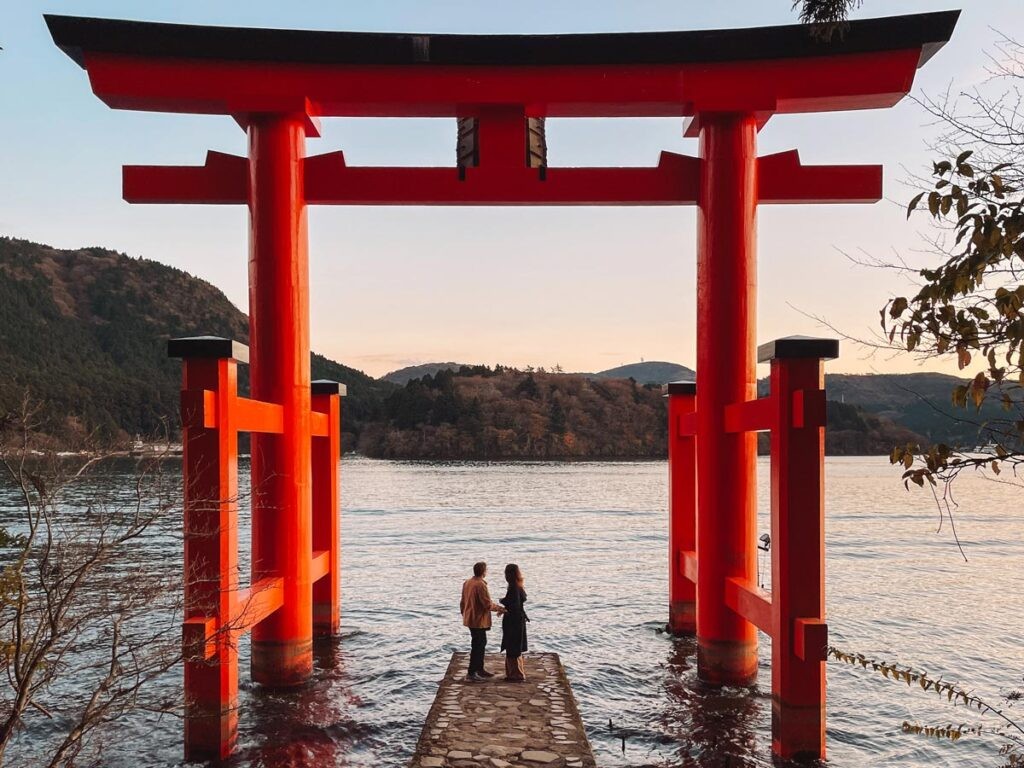 Hakone Shrine torii gate overlooking Lake Ashi
Hakone Shrine torii gate overlooking Lake Ashi
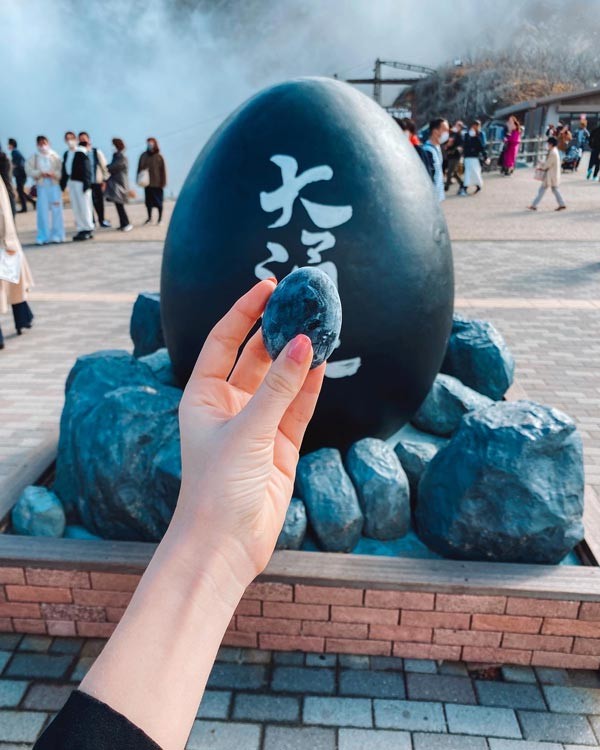 Black eggs (kuro-tamago) in Hakone, a volcanic delicacy
Black eggs (kuro-tamago) in Hakone, a volcanic delicacy
Hakone is also ideal for an overnight stay, with numerous traditional ryokan (Japanese inns) and hot spring hotels. Our Hakone accommodation guide features top recommendations, including hotels with Mount Fuji views.
Nikko Day Trip – History and Natural Splendor
Nikko, slightly further from Tokyo (2-3 hours), is a mountain town rich in history and natural beauty. The Nikko World Heritage Area Pass is recommended for day trips, covering round-trip transport from Tokyo and local transport in Nikko, often costing less than a standard round-trip train ticket.
Nikko day trip attractions:
- Shinkyo Bridge: Start at Shinkyo Bridge, a nearly 400-year-old bridge serving as the gateway to Nikko’s shrines and temples.
- Rinno-ji Temple: Visit Rinno-ji Temple, founded in the 8th century by a Buddhist monk and a UNESCO World Heritage site where Tendai monks train.
- Toshogu Shrine: Explore Toshogu Shrine, Nikko’s most significant temple and the final resting place of Tokugawa Ieyasu, adorned with elaborate decorations.
- Kanmangafuchi Abyss: Discover Kanmangafuchi Abyss, a valley formed by a Mount Nantai eruption, featuring 74 Jizo statues wearing red hats and bibs, with a legend of the statue count changing each time.
For a detailed Nikko itinerary, consult our one-day Nikko itinerary guide.
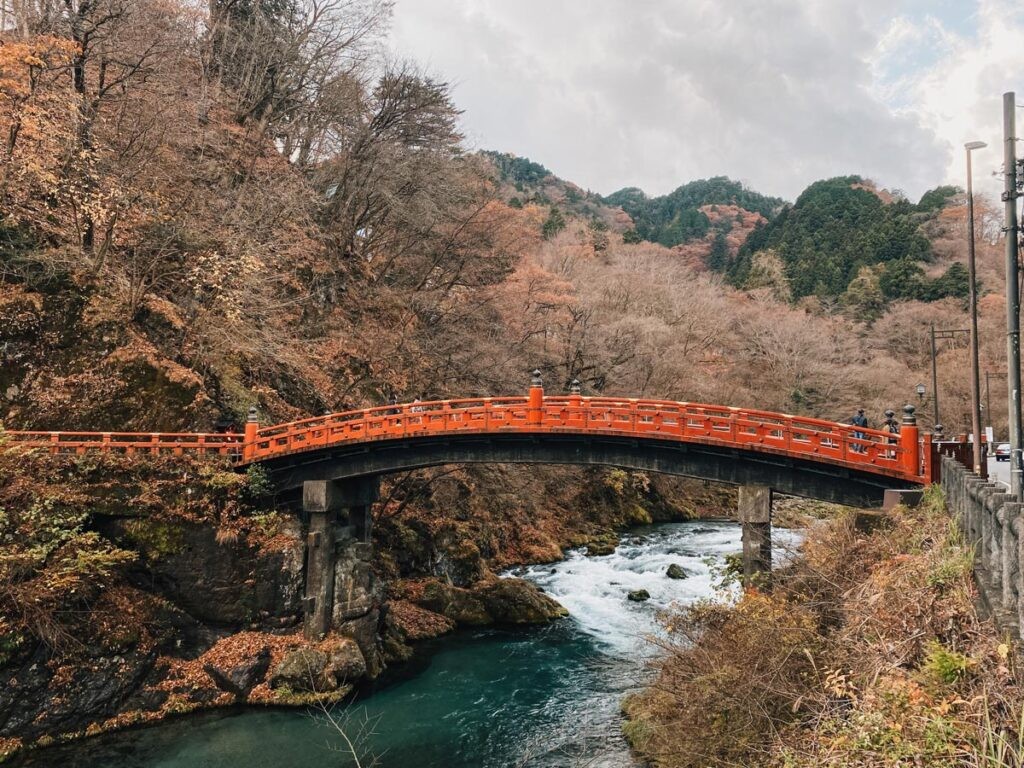 Shinkyo Bridge in Nikko, a historic and picturesque bridge
Shinkyo Bridge in Nikko, a historic and picturesque bridge
Consider an overnight stay in Nikko to fully appreciate its offerings. Explore our guide to the best ryokan in Nikko for traditional Japanese inn experiences.
Kamakura & Enoshima Day Trip – Seaside Temples and Coastal Views
Kamakura and Enoshima, neighboring seaside towns approximately one hour from Tokyo, offer a popular day trip combining temples, beaches, and seasonal hydrangea blooms. The Enoshima-Kamakura Freepass provides cost savings, including round-trip transport from Shinjuku, local train travel, and discounts.
Kamakura & Enoshima day trip highlights:
- Enoshima Island Exploration: Spend 2-3 hours exploring Enoshima Island, including Enoshima-jinja Shrine, Samuel Cocking Garden, and Nakamise Street.
- Great Buddha of Kamakura (Kamakura Daibutsu): Visit the iconic Kamakura Daibutsu, a massive 13th-century bronze Buddha statue.
- Komachi Street Stroll: Explore Komachi Street near Kamakura Station, lined with restaurants, cafes, and shops offering local specialties and souvenirs.
Refer to our Kamakura and Enoshima day trip itinerary for a more detailed route.
Days 7-9: Kyoto – Cultural Heart of Japan
After six days in and around Tokyo, your 2 week Japan travel itinerary moves to Kyoto, Japan’s cultural capital, renowned for its temples, shrines, and geisha districts.
For Kyoto accommodation, you have two options:
- Stay in Kyoto for five nights.
- Split your stay with three nights in Kyoto and two in Osaka.
Accommodation choice doesn’t significantly impact sightseeing. However, Osaka offers a different atmosphere (often more budget-friendly) than Kyoto. Our Kyoto vs. Osaka comparison guide can help you decide.
Regardless, a Kyoto stay is essential. Our Kyoto accommodation guide offers detailed recommendations, with top picks for first-time visitors:
| Area | Best Suited For | Recommended Hotel/Ryokan | Check Availability |
|---|---|---|---|
| Downtown Kyoto | First-Time Visitors | Hotel Resol Kyoto Kawaramachi Sanjo | Check Availability |
| Higashiyama | Traditional Atmosphere | Kyoto Granbell Hotel | Check Availability |
| Kyoto Station Area | Travel Hub | Hotel Granvia Kyoto | Check Availability |
Travel to Kyoto: Shinkansen Efficiency
The Shinkansen (bullet train) is the fastest and most convenient way to travel from Tokyo to Kyoto, taking approximately 2 hours 15 minutes. While the JR Pass can be used, individual Shinkansen tickets are often more cost-effective for this 2 week Japan travel itinerary due to recent price increases of the JR Pass. Purchase tickets at train stations or pre-book online for convenience.
Kyoto Highlights: Temples, Geishas, and Bamboo Forests
Day 7 involves Shinkansen travel from Tokyo to Kyoto. After checking into your Kyoto accommodation, take a relaxed afternoon to explore the surrounding area or consult our interactive map for nearby points of interest. Days 8 and 9 are dedicated to exploring Kyoto’s must-see sights. Our detailed 2-day Kyoto itinerary offers a comprehensive guide, including a geisha district walking route.
Kyoto’s must-see attractions:
- Fushimi Inari Taisha Shrine: Visit Fushimi Inari Taisha, famed for its thousands of vibrant red torii gates winding up Mount Inari. Arrive early to avoid crowds and allow 2-3 hours for the full hike.
- Geisha Districts (Higashiyama & Gion): Explore Kyoto’s historic geisha districts, Higashiyama and Gion, featuring temples like Kiyomizu-dera, traditional teahouses, and geisha sightings. Our 2-day Kyoto itinerary includes a walking route through these areas.
- Kinkaku-ji (Golden Pavilion): See Kinkaku-ji, the iconic Golden Pavilion, a Zen temple in a beautiful garden, a UNESCO World Heritage site (allow a morning or afternoon).
- Arashiyama Bamboo Grove: Immerse yourself in the Arashiyama Bamboo Grove in West Kyoto, a globally recognized and photographed bamboo forest, open 24/7 and free to enter (allow a morning or afternoon).
- Kimono Experience: Rent a kimono in Kyoto, a culturally rich city ideal for wearing traditional attire. Professional kimono dressers assist with dressing, and kimono rental is considered respectful cultural appreciation.
- Pontocho Alley Dining: Dine in Pontocho alleyway, a charming and atmospheric dining street, particularly enchanting in the evening.
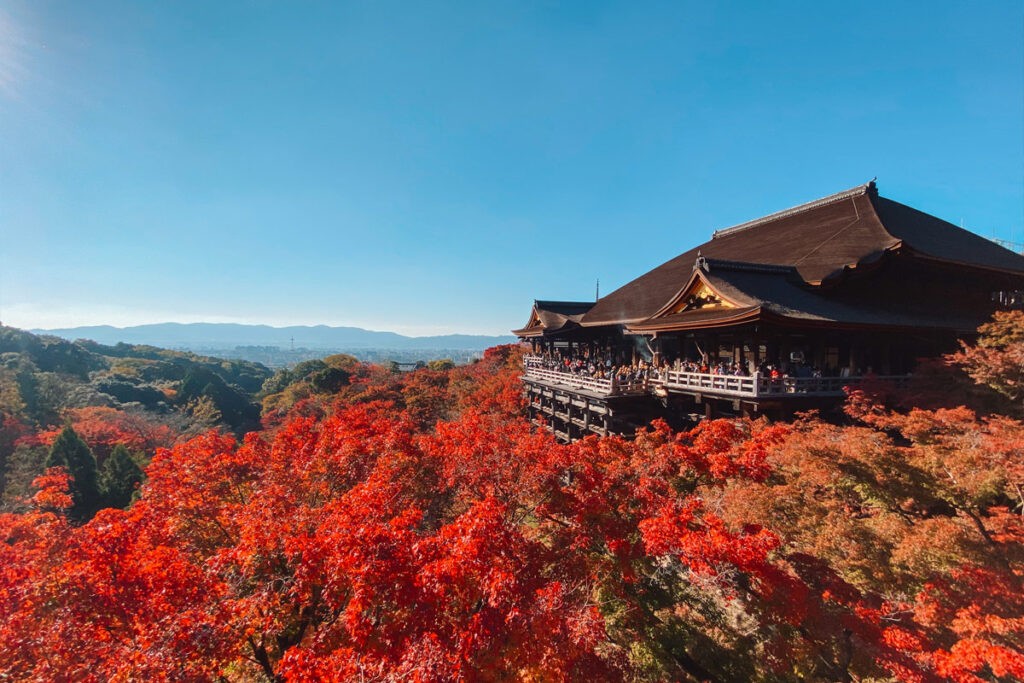 Kyoto in autumn, showcasing vibrant fall foliage
Kyoto in autumn, showcasing vibrant fall foliage
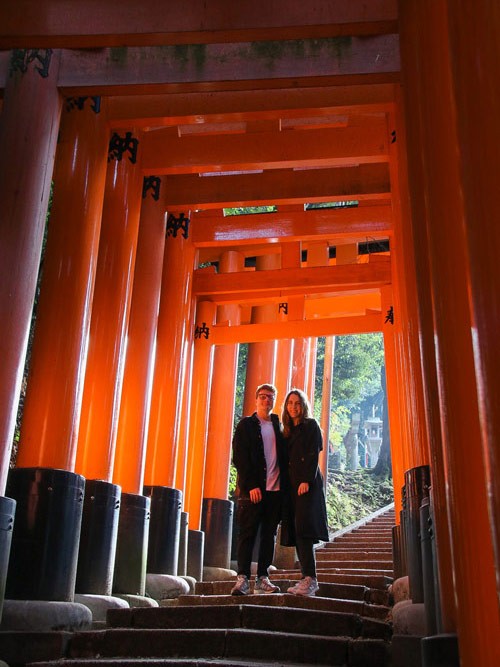 Fushimi Inari Taisha Shrine in Kyoto, with thousands of red torii gates
Fushimi Inari Taisha Shrine in Kyoto, with thousands of red torii gates
Day 10: Osaka – Culinary Capital and Vibrant Cityscape
Day 10 of your 2 week Japan travel itinerary features a day trip to Osaka, known as “the nation’s kitchen” and celebrated for its street food. Osaka offers a distinct urban experience compared to Kyoto.
Osaka is easily accessible from Kyoto (15 minutes by Shinkansen, 30-40 minutes by train). Osaka’s must-see attractions:
- Osaka Castle: Explore Osaka Castle, a prominent landmark with a rich history dating back to the 16th century, and stroll through its surrounding gardens.
- Shinsekai District: Visit Shinsekai, a retro district developed during Japan’s industrial boom, featuring the Tsutenkaku Tower inspired by the Eiffel Tower, and offering diverse culinary experiences.
- Namba Yasaka Shrine: See Namba Yasaka Shrine, featuring a striking 12-meter tall lion-head-shaped structure believed to ward off evil spirits.
- Nipponbashi Den-Den Town: Explore Nipponbashi Den-Den Town, Osaka’s equivalent to Akihabara, for retro video games and electronics.
- Dotonbori Nightlife: Immerse yourself in Dotonbori, the heart of Osaka’s nightlife, known for neon lights, street food, and entertainment, including the iconic Glico Running Man sign.
Our one-day Osaka itinerary provides a detailed route and recommendations.
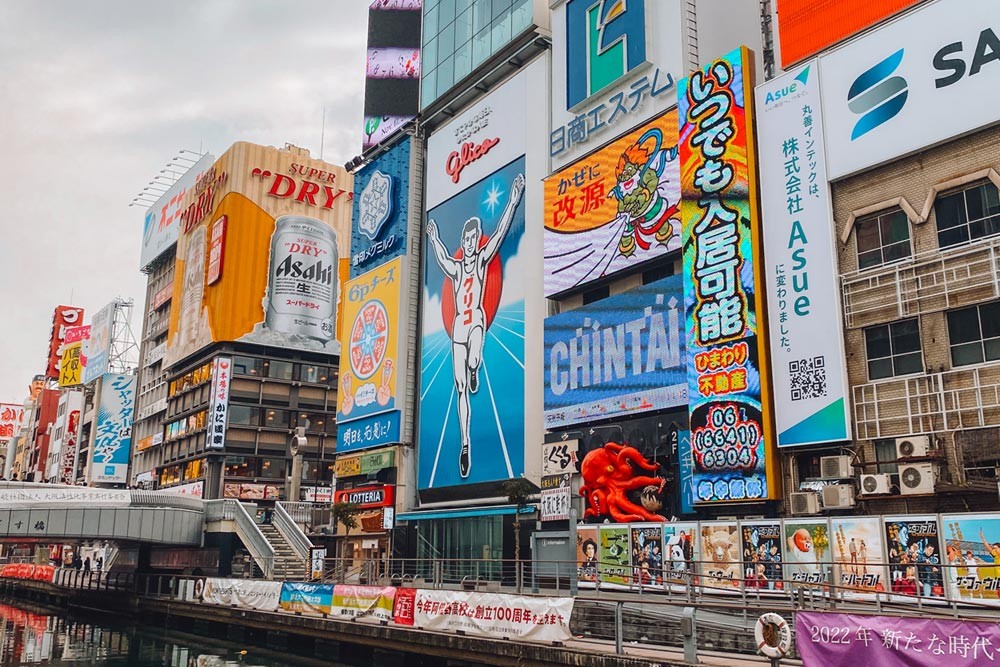 Glico Running Man sign in Dotonbori, Osaka, a famous landmark
Glico Running Man sign in Dotonbori, Osaka, a famous landmark
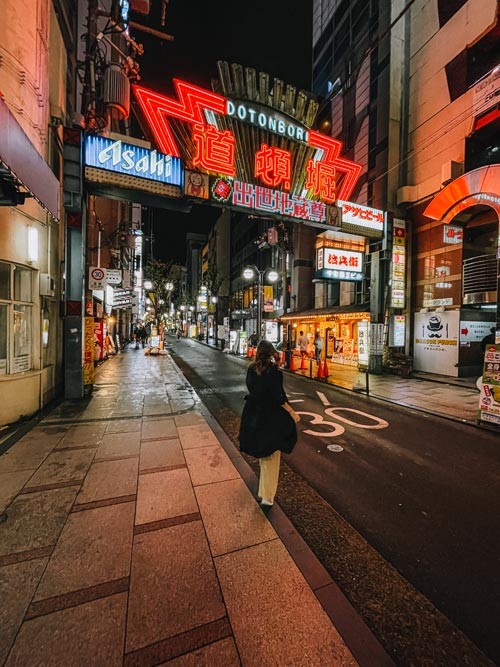 Dotonbori in Osaka at night, illuminated with vibrant neon signs
Dotonbori in Osaka at night, illuminated with vibrant neon signs
Consider extending your stay in Osaka for a night or two, especially if you appreciate nightlife and food. Our Osaka accommodation guide recommends areas and hotels, with top picks:
| Area | Best Suited For | Recommended Hotel | Check Availability |
|---|---|---|---|
| Umeda/Kita | First-Time Visitors | Sonezaki Luxe Hotel | Check Availability |
| Namba | Nightlife & Food Lovers | Karaksa Hotel Osaka Namba | Check Availability |
| Shinsaibashi | Quieter, Central Location | The Bridge Hotel Shinsaibashi | Check Availability |
Our Kyoto vs. Osaka base comparison guide offers further insights for your decision.
If visiting Universal Studios Japan in Osaka, consider substituting a day in Kyoto, Osaka, or Nara, as they are geographically close.
Day 11: Nara – Deer Park and Ancient Temples
Day 11 takes you to Nara, Japan’s 8th-century capital, renowned for its deer park and historic temples. Nara is easily accessible from both Kyoto and Osaka.
Travel to Nara from Kyoto via the JR Nara Line (Miyakoji Rapid recommended, 45 minutes) or Kintetsu Line (Express or Limited Express). From Osaka, use the JR Yamatoji Line (45 minutes from Osaka Station, 30 minutes from Tennoji Station) or Kintetsu Nara Line (Express or Limited Express).
Nara’s must-see attractions:
- Nara Deer Park: Experience Nara Deer Park, home to over 1,200 freely roaming Sika deer. Purchase deer crackers to feed and interact with these gentle creatures.
- Yoshikien & Isuien Gardens: Explore Nara’s serene gardens, including Isuien Garden (Zen garden, entrance fee) and Yoshikien Garden (free for foreigners, adjacent to Isuien).
- Todai-ji Temple: Visit Todai-ji Temple, the world’s largest wooden structure, dating back to 752, housing a colossal bronze Buddha statue (Daibutsu).
- Kasuga Taisha Shrine: Explore Kasuga Taisha Shrine, a UNESCO World Heritage site known for its thousands of stone and bronze lanterns. The inner shrine requires a small fee but is highly recommended for close-up lantern viewing.
Our one-day Nara itinerary provides a detailed walking route and transport information.
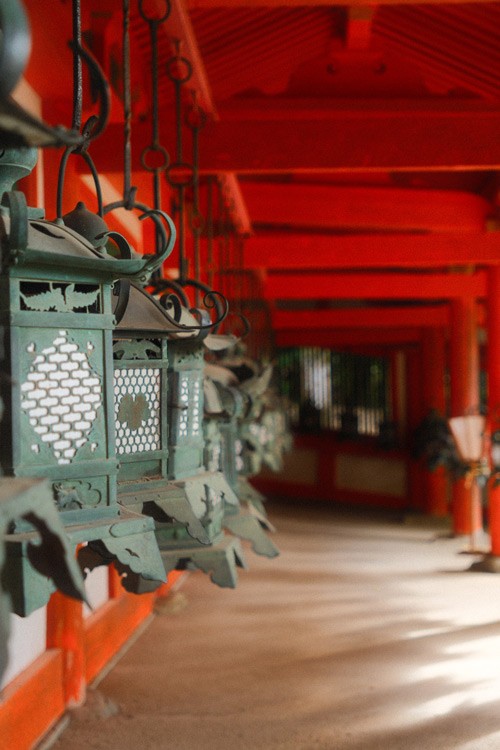 Kasuga Taisha Shrine in Nara, famous for its lanterns
Kasuga Taisha Shrine in Nara, famous for its lanterns
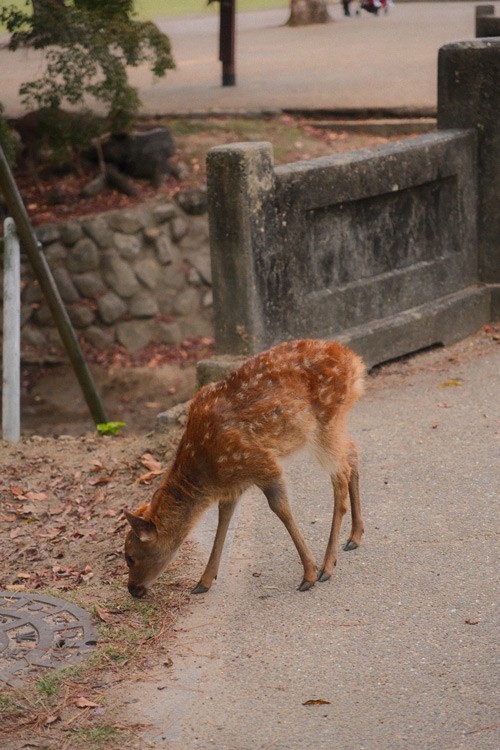 Deer in Nara Park, interacting with visitors
Deer in Nara Park, interacting with visitors
Day 12: Himeji – Majestic White Heron Castle
Day 12 involves relocating towards Hiroshima, your base for the final days of your 2 week Japan travel itinerary. En route, stop at Himeji, famous for its magnificent Himeji Castle. Himeji is conveniently located on the way to Hiroshima.
Utilize luggage lockers at Himeji Station for convenient castle exploration without luggage.
Himeji attractions:
- Himeji Castle (White Heron Castle): Visit Himeji Castle, a UNESCO World Heritage site and one of Japan’s most stunning castles, dating back to 1333, remarkably preserved through centuries.
- Himeyama Park: Explore Himeyama Park surrounding the castle, featuring shrines, a pond, and koi-filled moats.
- Kōko-en Garden: Stroll through Kōko-en Garden, comprising nine distinct Japanese-style gardens, including a tea house (consider a combined ticket with Himeji Castle).
Our one-day Himeji itinerary offers further details on sightseeing and transport.
After Himeji, continue your train journey to Hiroshima, your base for the next two nights.
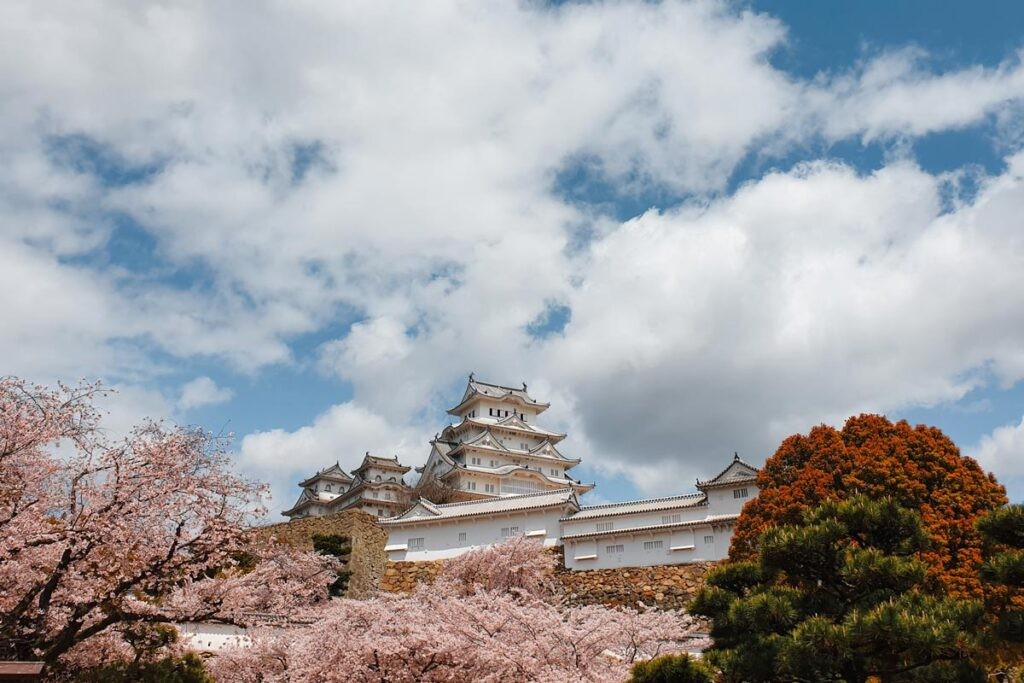 Himeji Castle in spring, surrounded by cherry blossoms
Himeji Castle in spring, surrounded by cherry blossoms
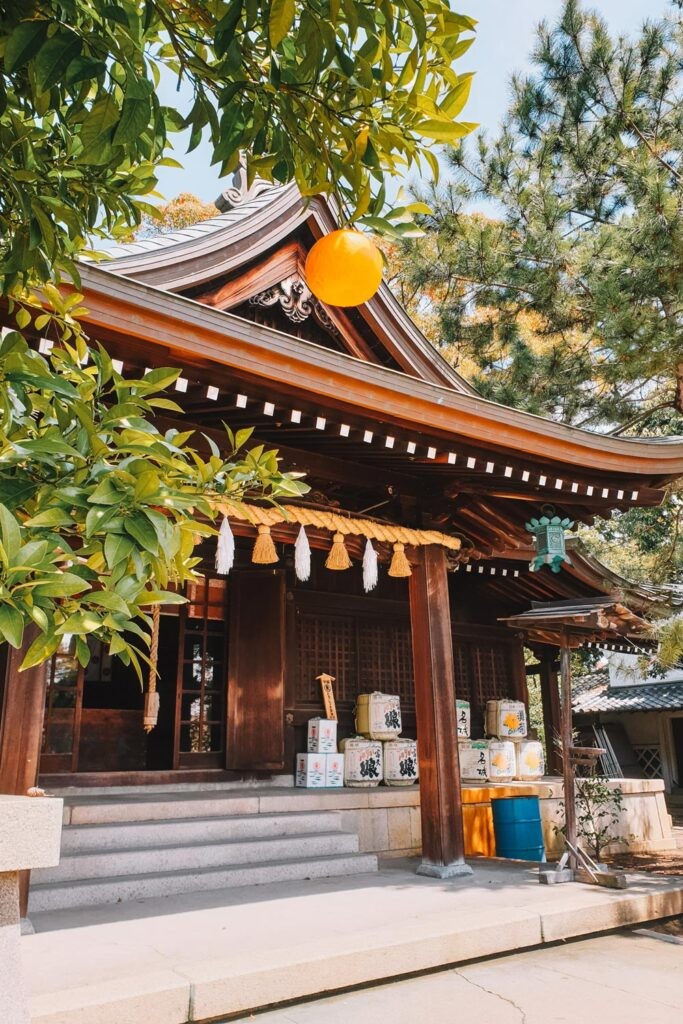 Himeji Jinja Shrine within Himeyama Park
Himeji Jinja Shrine within Himeyama Park
Day 13: Hiroshima – Remembrance and Rebirth
Day 13 is dedicated to exploring Hiroshima, a city known for its resilience and poignant history. Hiroshima has rebuilt itself into a thriving city after the atomic bombing of 1945.
Hiroshima attractions:
- Hiroshima Peace Memorial Museum: Visit the Hiroshima Peace Memorial Museum, a place for reflection and remembrance of the atomic bombing victims.
- Atomic Bomb Dome: See the Atomic Bomb Dome, a preserved structure that survived the bombing, now a symbol of peace and resilience.
- Hiroshima Orizuru Tower: Ascend Hiroshima Orizuru Tower for panoramic views of Peace Memorial Park and the Atomic Bomb Dome.
- Hiroshima Castle (Carp Castle): Explore Hiroshima Castle, also known as Carp Castle, and its surrounding island grounds.
- Hiroshima Gokoku Shrine: Visit Hiroshima Gokoku Shrine, a short walk from Hiroshima Castle, marked by a large stone torii gate.
Our one-day Hiroshima itinerary provides more details for your visit.
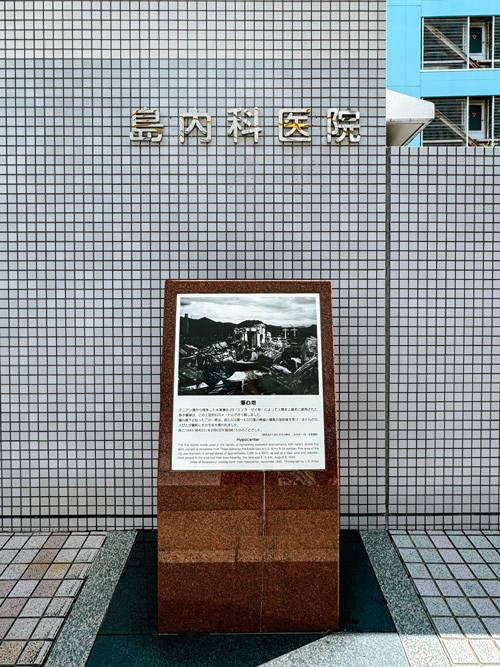 Hiroshima Ground Zero, a somber reminder of history
Hiroshima Ground Zero, a somber reminder of history
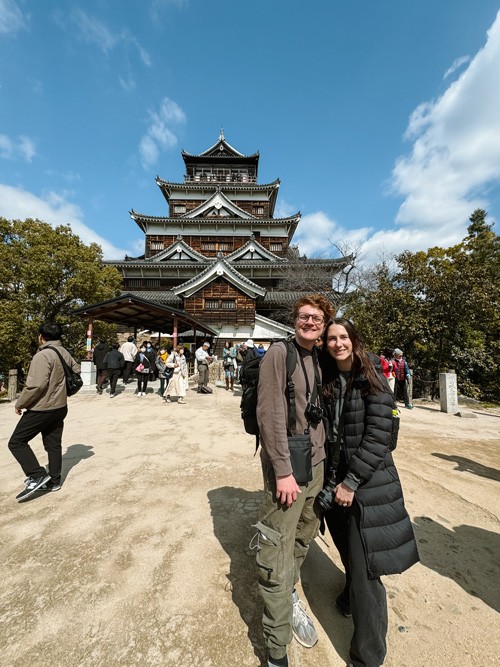 Hiroshima Castle, a symbol of the city's resilience
Hiroshima Castle, a symbol of the city's resilience
Day 14: Miyajima – Floating Torii and Scenic Island
Day 14, the final day of your 2 week Japan travel itinerary, features a day trip to Miyajima Island from Hiroshima. Miyajima is easily reached from Hiroshima Station (30 minutes via JR Sanyo Line to Miyajimaguchi Station).
Miyajima Island attractions:
- Itsukushima Shrine and Floating Torii Gate: Explore Itsukushima Shrine, famous for its iconic red floating torii gate, a quintessential Japanese landmark. Visit the Treasure Hall and admire the torii gate from the main hall.
- Senjōkaku Pavilion & Five-Story Pagoda: Climb to Senjōkaku Pavilion for views of the Seto Inland Sea, also home to Miyajima’s Five-Story Pagoda.
- Tenshinkaku Cafe with Pagoda Views: Enjoy coffee and cake at Tenshinkaku Cafe, offering stunning views of the pagoda (small entrance fee).
- Mt. Misen Views: Hike or take the Miyajima Ropeway to Mt. Misen Observatory for panoramic island views.
- Momiji Manjū Tasting: Try Momiji Manjū, Miyajima’s maple leaf-shaped pastries filled with red bean paste.
- Fresh Oyster Indulgence: Savor fresh oysters, a Miyajima specialty, often grilled and served with soy sauce.
Our one-day Miyajima itinerary offers in-depth information for your visit.
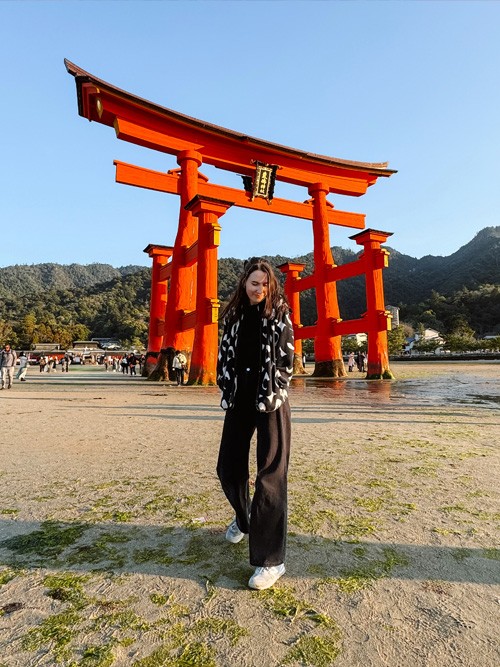 Miyajima torii gate at high tide, appearing to float on water
Miyajima torii gate at high tide, appearing to float on water
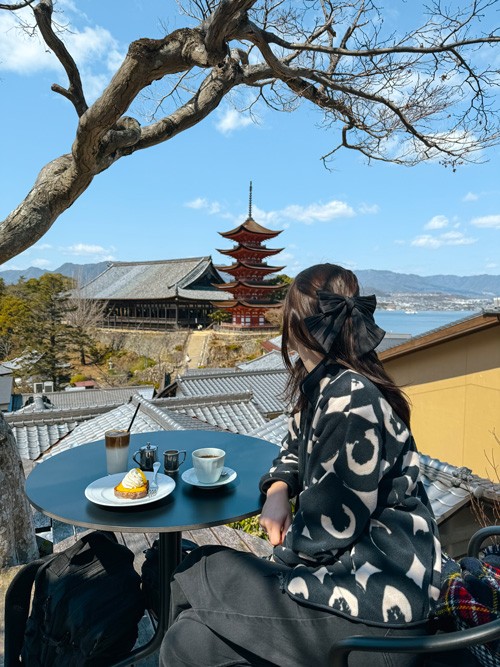 Miyajima cafe with a view of the pagoda
Miyajima cafe with a view of the pagoda
From Miyajima, travel to the airport for your departure flight. Flying from Osaka (KIX) can be more convenient and potentially cost-saving than returning to Tokyo, as Osaka is closer to Hiroshima.
Is 2 Weeks Sufficient for Japan?
Two weeks is indeed a great timeframe to experience Japan’s major highlights. This 2 week Japan travel itinerary covers Tokyo, Hakone, Kyoto, Osaka, Nara, Himeji, Hiroshima, and Miyajima, providing a comprehensive first impression. For a longer exploration, consider our 3-week Japan itinerary. However, two weeks is ample time for an enriching initial Japan experience.
JR Pass Necessity for a 2 Week Japan Trip?
For this specific 2 week Japan travel itinerary, a JR Pass is not essential and may not be the most cost-effective option. Purchasing individual Shinkansen tickets and utilizing a Suica/Pasmo card for local city travel is generally more economical. Recent JR Pass price increases have shifted the cost-benefit analysis. Shinkansen tickets can be purchased at stations or pre-booked online.
Budgeting for a 2 Week Japan Trip
Japan trip costs vary widely. A mid-range 2 week Japan travel itinerary can be budgeted around £2,500 per person (excluding flights, consider additional costs for flights). This estimate covers accommodation, food, activities, and souvenirs. Refer to our detailed Japan cost breakdown guide for more information.
Conclusion: Your Unforgettable 2 Week Japan Adventure Awaits
This 2 week Japan travel itinerary offers a captivating introduction to Japan’s diverse attractions, from bustling cities to serene landscapes and rich cultural heritage. While Japan offers endless exploration, this itinerary provides a fantastic foundation for your first visit, likely igniting a desire for future Japanese adventures.
For extended travel plans, explore our 3-week Japan itinerary or consider extending your trip to Kyushu with our 7-day Kyushu itinerary starting from Fukuoka.
Happy travel planning, and we wish you an incredible journey in Japan!

